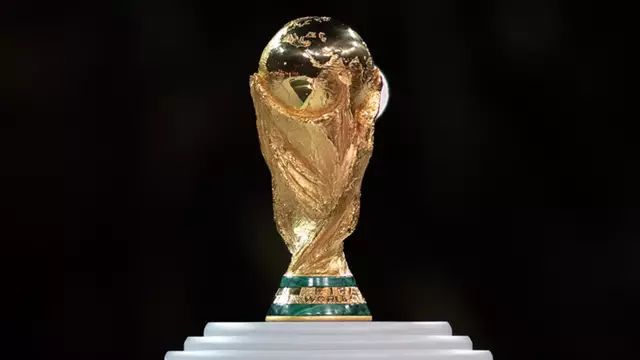
FIFA expands its $355M Club Benefits Program to include clubs with players in qualifiers, boosting global fairness and financial support for smaller teams
A Big Win for Small Clubs
$355M FIFA Payout Plan Rewards More Teams Than Ever – FIFA has just made a historic announcement that could change the financial future of football clubs around the world. Starting with the 2026 World Cup, hundreds more clubs will receive a share of a massive $355 million fund. This money comes from FIFA’s World Cup revenues and is part of an expanded “Club Benefits Program.”
What’s new? For the first time ever, clubs whose players participate in qualifying matches not just the final tournament will be compensated. That means even smaller clubs, whose players may never reach the World Cup stage, can now benefit financially from their contribution to national teams.
This move is being celebrated as a major step toward fairness and recognition in global football. Let’s explore what this means, how it works, and why it matters.
How the Club Benefits Program Works
The Club Benefits Program isn’t new. FIFA launched it in 2010 during the South Africa World Cup, starting with a $40 million fund. Since then, it has grown significantly, with $209 million paid out after both the 2018 and 2022 tournaments. But the 2026 edition is different, it’s bigger, broader, and more inclusive.
Here’s how it works:
- Who Gets Paid?
Any club that releases a player for a national team during the World Cup qualifiers or the final tournament will receive compensation. This includes clubs from all FIFA member associations, except those that didn’t participate in qualifiers, like Eritrea and Russia. - How Is Payment Calculated?
Payments are based on a daily rate for each player, covering the time they spend with their national team. The longer a player is away, the more the club earns. - How Much Is Available?
A total of $355 million will be distributed. That’s a 70% increase from previous editions. - Who Benefits Most?
In 2022, Manchester City received the highest payout—nearly $4.6 million. But with the new rules, smaller clubs stand to gain more, especially those with players active in qualifiers.
This change is part of a renewed agreement between FIFA and the European Club Association (ECA), aimed at making football more equitable and sustainable for clubs of all sizes.
Why This Matters: Levelling the Playing Field
For years, smaller clubs have played a vital role in developing talent, only to see their players called up for national duty without any financial reward. The expanded Club Benefits Program changes that.
1. Recognition for Development Work
Clubs invest time, money, and resources into training players. When those players represent their countries, it’s a proud moment but also a financial burden. This program acknowledges that contribution.
2. Support for Grassroots Football
Many clubs operate on tight budgets. A few thousand dollars from FIFA can help fund youth academies, improve facilities, or pay staff salaries. It’s a lifeline for grassroots football.
3. Global Inclusion
Previously, only clubs with players in the final tournament received payments. Now, clubs from countries that rarely qualify like India, Kenya, or Bolivia can benefit if their players participate in qualifiers.
4. Reduced Club vs. Country Tension
There’s often friction between clubs and national teams over player availability. With financial compensation, clubs may be more willing to release players, improving cooperation.
This isn’t just about money, it’s about fairness, respect, and sustainability in football.
Impact on the 2026 World Cup and Beyond
The 2026 World Cup will be hosted across the United States, Canada, and Mexico. It will feature 48 teams, up from 32, making it the biggest tournament in history. That means more matches, more players, and more opportunities for clubs to earn compensation.
Here’s what to expect:
1. More Clubs, More Money
With qualifiers now included, the number of eligible clubs will skyrocket. In 2022, 440 clubs received payments. In 2026, that number could double or even triple.
2. Wider Geographic Reach
Clubs from Africa, Asia, and the Americas will benefit more than ever. This could help balance the financial gap between rich European clubs and smaller teams elsewhere.
3. Boost to Player Development
Knowing that releasing players can bring financial rewards, clubs may invest more in scouting and training. This could lead to better talent pipelines and stronger national teams.
4. Pressure on Transparency
With more money flowing, clubs and federations will need to ensure transparency and accountability. FIFA will likely monitor payments closely to avoid misuse.
This expansion could reshape the economics of international football, making it more inclusive and rewarding for everyone involved.
Final Thoughts: A Win-Win for Clubs and the Game
FIFA’s decision to expand the Club Benefits Program is being hailed as a game-changer. It’s a rare moment where global football governance aligns with grassroots needs. By recognizing the role of clubs in player development and national success, FIFA is sending a powerful message: every contribution matters.
For all others who care deeply about civic accountability and ethical transparency, this initiative offers a model worth studying. It shows how large institutions can create systems that reward participation, promote fairness, and strengthen the entire ecosystem.
Also read: FIFA World Cup 2026- UEFA Qualifiers: How Teams Qualify for the Biggest Football Stage
Stay informed with the latest news and updates – only on Rapido Updates.
2 thoughts on “Massive Wins for Clubs: $355M FIFA Payout Plan Rewards More Teams Than Ever”
Comments are closed.